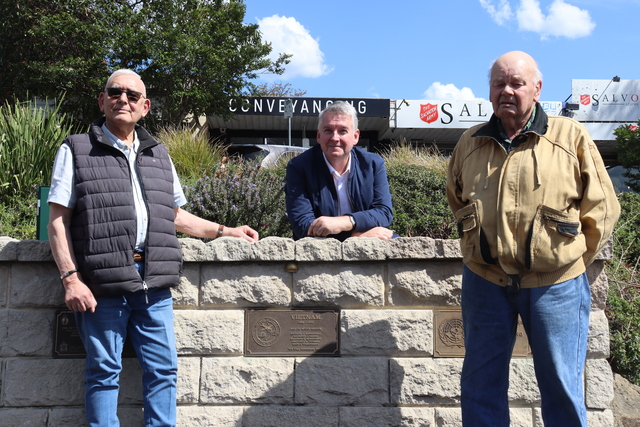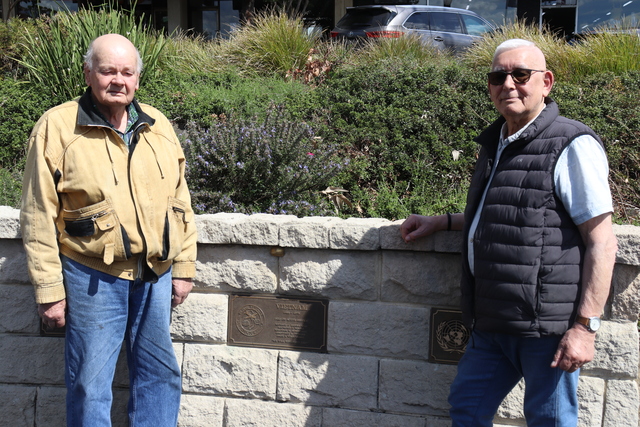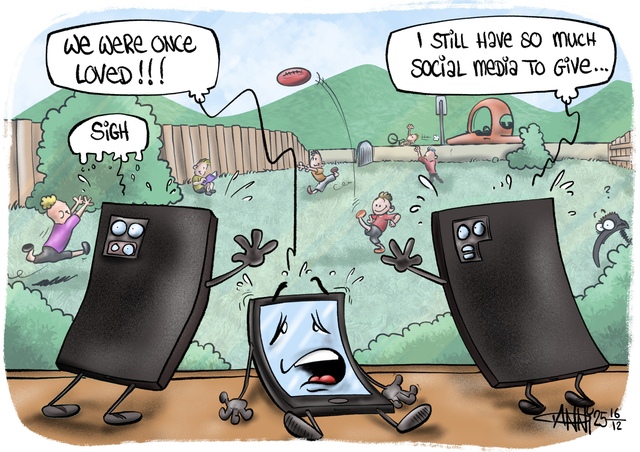Historian Anthony McAleer OAM has been documenting the history of the Shire of Lillydale and its Military Heritage for many years, and he’s now reached the fifth and final volume.
Documenting the timeframe between 1945 and 1995, Mr McAleer said there’s an important focus on one event in particular.
“A large part of that will be the war in Vietnam (1962 to 1975), both what happened to the men and women from that district who served overseas in that war and what happened on the homefront,” he said.
Research from multiple sources allowed Mr McAleer to put together a nominal roll of 130 Shire of Lillydale residents who served in Vietnam.
These men and women served across all divisions of the Royal Australian Navy, the Australian Army and the Royal Australian Air Force. Five of them died while on active service.
In a twist of fate, two men, one from Montrose, the other from Mount Evelyn, would serve at opposite ends of the war and end up being friends years later.
Doug Hill from Montrose was the first local soldier to serve in the Vietnam War. The Warrant Officer arrived in Vietnam in July 1964 as part of the Australian Army Training Team Vietnam.
Before Mr Hill first went to Vietnam there had been 32 Australians sent over. He was drafted in the first increase to 100 soldiers, which for the next five to six years would be a steady flow of soldiers.
Mount Evelyn resident Amat Binnoore left for Vietnam in 1971 and was on the last plane home to Australia when the Australian Task Force was packed up in Nui Dat in 1972.
This makes Mr Hill the first local soldier to arrive in Vietnam and Mr Binnoore the last to leave.
Being friends for quite some time, the pair, however, had never known this fact until Mr McAleer’s research.
People like Mr Hill and Mr Binnoore have sat down with Mr McAleer and told stories of their lives before, during and after the war, helping craft his next book.
“Unlike World War One and World War Two, records are scarce linking veterans to the place they were living when they joined the service,” Mr McAleer said.
“As a result, I was wanting to hear from Vietnam veterans who were either born or lived in the following towns before they served.”
These suburbs include Wonga Park, Lilydale, Coldstream, Yering, Gruyere, Wandin, Seville, Silvan, Monbulk, Olinda, Kalorama, Mt Dandenong, Montrose, Kilsyth, Mooroolbark and Mt Evelyn.
Mr Hill’s stint in Vietnam from 1964 to 1965 was very much a learning and reconnaissance experience, returning to Queensland to teach fellow soldiers who would be heading into the jungles of Vietnam.
The Jungle Warfare Training Centre in Canungra asked Mr Hill to build a booby trap course to train men in how to spot these traps in the jungle. It was first meant to be for six months but turned into two years.
“I spent two years instructing these battalions prior to going over to Vietnam on what to expect and preparation because they were going into a war zone,” he said.
After his two years at Canungra, Mr Hill volunteered to be sent back as part of the training team.
And so, in 1968 Mr Hill returned to the active war zone. His first trip with the infantry training centre and his second with the first battalion, first regiment.
Working with the Vietnamese and Americans, Mr Hill said for what they were doing, it was impossible to carry rations, and so he lived on a Vietnamese diet.
“One night, it sticks in my mind, their helmets, they’d take the liner out, and that was a cooking pot and when they finished cooking, they cleaned it and wore it again,” he said.
In his diet, Mr Hill said there were dragonflies and snails, common delicacies when living off what could be sourced in the jungle.
Mr Hill’s unit was and is the most decorated in the Australian Army, with four Victoria Cross recipients. He himself has 13 medals, one of which is the American Bronze Star for saving an American Marine.
“It was one of the lieutenants, he’d only been in country for two weeks or three weeks. We were supposed to stay with the battalion headquarters, but we couldn’t and still make decisions on what the forward company was doing.
“This particular day, the forward section went to ground, and I didn’t notice, and the lieutenant and I went off. We took fire, and he got hit in the leg. And I said, ‘Can you stand up?’ He said, ‘I don’t know. I’ll try.’ I got him in the fireman’s lift with all our luggage. I tried later on, I couldn’t do it.”
They took more fire and had to hide, waiting for the forward section to return.
“15 years later, I got a letter from the Yanks saying that I’d earned (the Bronze Star), but the Australian Army wouldn’t acknowledge it. Roughly 20 to 21 years later, I finally got it.
“They sent an Admiral down from Canberra. An American Admiral came down and presented it at the American Embassy.”
For Mr Binnoore who arrived years after Mr Hill left, he said it was a “different type of conflict” with no frontline per se, just hidden warfare.
Mr Binnoore said you never knew if the man delivering bread rolls on push bike or a mum and child would pull out a semi-automatic machine gun as an active terrorist.
He was the load master of the 707, something he described as “one of the most unfortunate jobs I’ve probably ever had in my life”.
“When the 707 (plane) landed, bringing the new guys in. If it turned around and faced outward, you knew there were deceased being returned home,” Mr Binnoore said.
“My job was to go out with a driver, and we’d dress with no belt, no nothing on, and unfortunately, pick up the remains and bring them back and load them into the plane. They would be loaded in hull one, and nothing, no baggage, no nothing at all could touch the coffin.”
He was then based at the headquarters in Saigon, and spent his last five months as a transport sergeant driving for Major General Donald Dunstan, commander of the Australian Forces in Vietnam (COMAFV).
“The thing you never do is to take the same route every day because everybody knows. We were going this different way, and it’s funny in life when you sense something is not right. We go down further and there’s a riot,” Mr Binnoore said.
“We’ve never faced it before. You make a decision. And I immediately spun the vehicle around and went down a one way street to get out of it.”
For Mr Hill, he suffered from severe PTSD and only recently has he been able to open up and speak about his time in the war, with help from a psychologist.
Mr McAleer would also like to hear stories of women like the first Australian nurse to serve in Vietnam, Sister Julia Seymour of Wonga Park, who worked in a refugee camp in central Vietnam in 1966.
To share any information with Mr McAleer, contact him via email at antmca@bigpond.com








